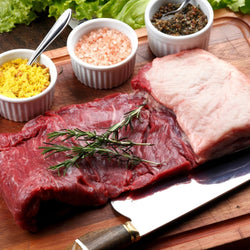The History and Culture of Meat-Eating in Different Countries
Meat-eating is a common practice that has been a part of human history for thousands of years. It is a dietary staple in many cultures and is a source of nutrition, sustenance, and cultural identity. In this article, we will explore the history and culture of meat-eating in different countries and how it has shaped the diets and traditions of people around the world.
Meat-Eating in Ancient Civilizations
Meat-eating has been a part of human history for thousands of years, with evidence of early human ancestors hunting and consuming meat as far back as 2.6 million years ago. In ancient civilizations, meat was an important source of nutrition and was a valuable commodity, often reserved for the wealthy and powerful.
In ancient Greece, meat was an integral part of the diet and was commonly consumed during feasts and religious celebrations. In ancient Rome, meat was also a central part of the diet, with the rich eating a variety of meats, including pork, beef, and game.
Meat-Eating in Asia
In Asia, meat-eating has a rich history, with many countries having their own unique traditions and cultural practices surrounding it. In China, meat has been a part of the diet for thousands of years, with pork being the most commonly consumed meat. In Japan, seafood and fish have been a staple of the diet for centuries, with sushi and sashimi being some of the most popular dishes.
In India, the consumption of meat varies depending on religious beliefs, with many Hindu and Buddhist followers being vegetarian or only consuming small amounts of meat. However, in other parts of India, meat is a staple of the diet, with dishes like kebabs and curries being popular.
Meat-Eating in Europe
In Europe, meat-eating has a long and varied history, with each country having its own unique traditions and cultural practices surrounding it. In the UK, beef and lamb are the most commonly consumed meats, with traditional dishes like roast beef and shepherd's pie being popular. In France, meat is a central part of the diet, with dishes like coq au vin and boeuf bourguignon being popular.
In Germany, meat is also a staple of the diet, with dishes like sausages and pork knuckles being popular. In Italy, cured meats like salami and prosciutto are commonly consumed, as well as dishes like lasagna and carbonara that incorporate meat into the recipe.
Meat-Eating in the Americas
In the Americas, meat-eating has a rich history, with many countries having their own unique traditions and cultural practices surrounding it. In the United States, beef and poultry are the most commonly consumed meats, with burgers and fried chicken being popular dishes. In Mexico, meat is a staple of the diet, with dishes like tacos and enchiladas incorporating it into the recipe.
In Brazil, meat is also a central part of the diet, with traditional dishes like churrasco and picanha being popular. In Argentina, beef is a staple of the diet, with grilled steaks being a popular dish.
Conclusion
In conclusion, meat-eating is a common practice that has been a part of human history for thousands of years. It is a source of nutrition, sustenance, and cultural identity, with each country having its own unique traditions and cultural practices surrounding it. Whether it is pork in China, seafood in Japan, beef in the United States, or cured meats in Italy, meat continues to be an important part of the diets of people around the world.







